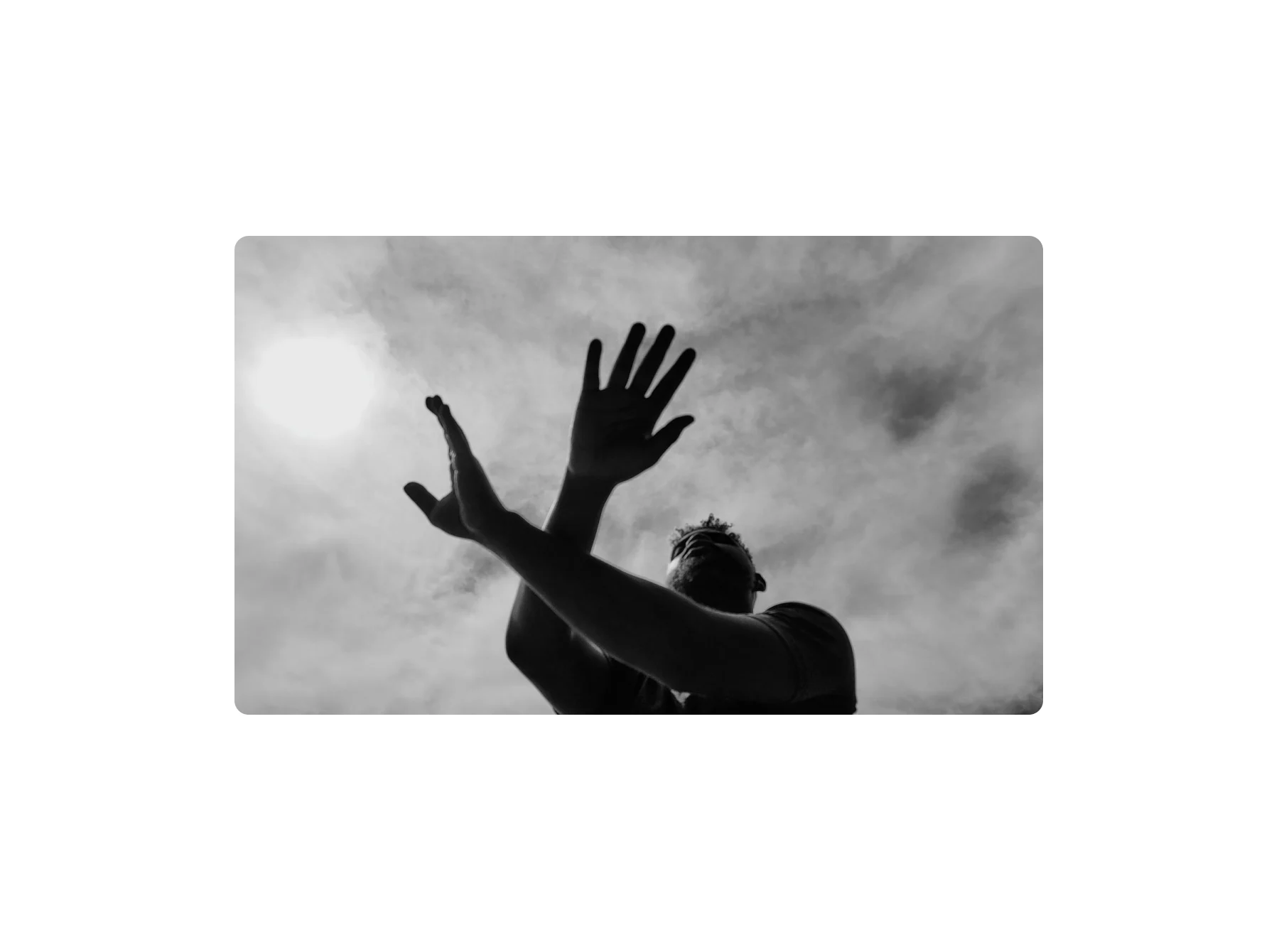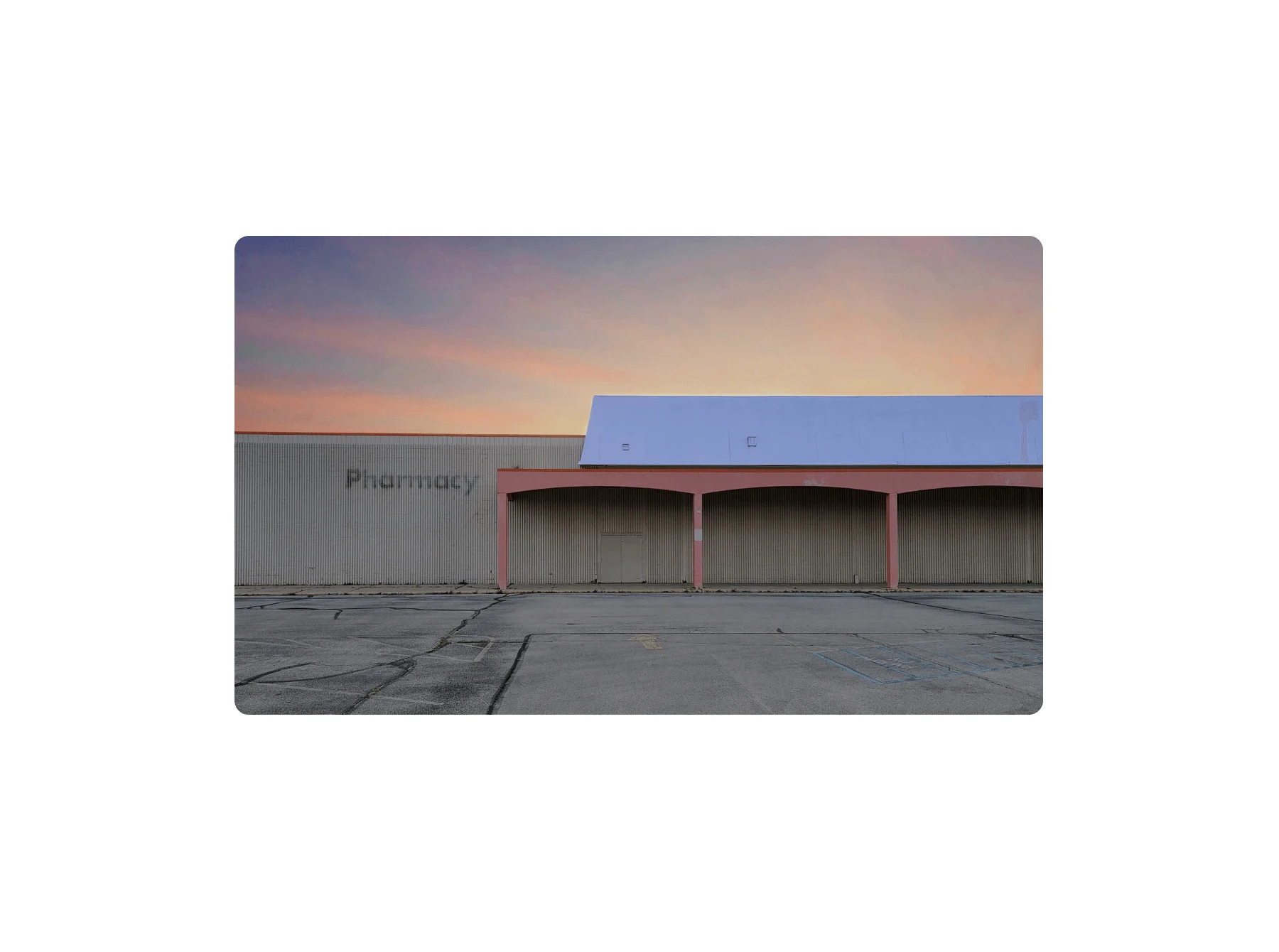


Throughout his career Los-Angeles-based Neil Krug has created some of the most memorable images in modern music photography, from dreamy, vintage hued album covers to otherworldly videos shot in the Californian desert. The desert has long served as a place of inspiration for Neil, and for this series, created in collaboration with the Samsung Galaxy Note20 Ultra 5G, he returned after many months spent in lockdown to rediscover its magic for his newest project, Visitor. Diving into Neil’s creative process we explore how technology inspires his sense of wonder as an artist.

Sometimes, revisiting the past gives you a new perspective on the present; the photographer Neil Krug has been contemplating this idea as of late. Neil himself is one of the alternative music industry’s most sought-after art directors, known for crafting wistful, color-infused, psychedelic visuals for some of the music industry’s biggest names. In the past, he’s shot many of his trademark images in the desert—but he hasn’t been back for a while. When submerged in these barren landscapes, Neil has a tact for finding visual counterparts for lucid, rolling music that is otherwise difficult to pin down or describe. Gazing into his images of sand dunes or canyons illuminated by strange, rich colours, it’s clear that Neil is a photographer dealing in feelings and wonder, as opposed to particularities or hard facts.
I wanted to capture memory fragments of these places I used to explore and inhabit.

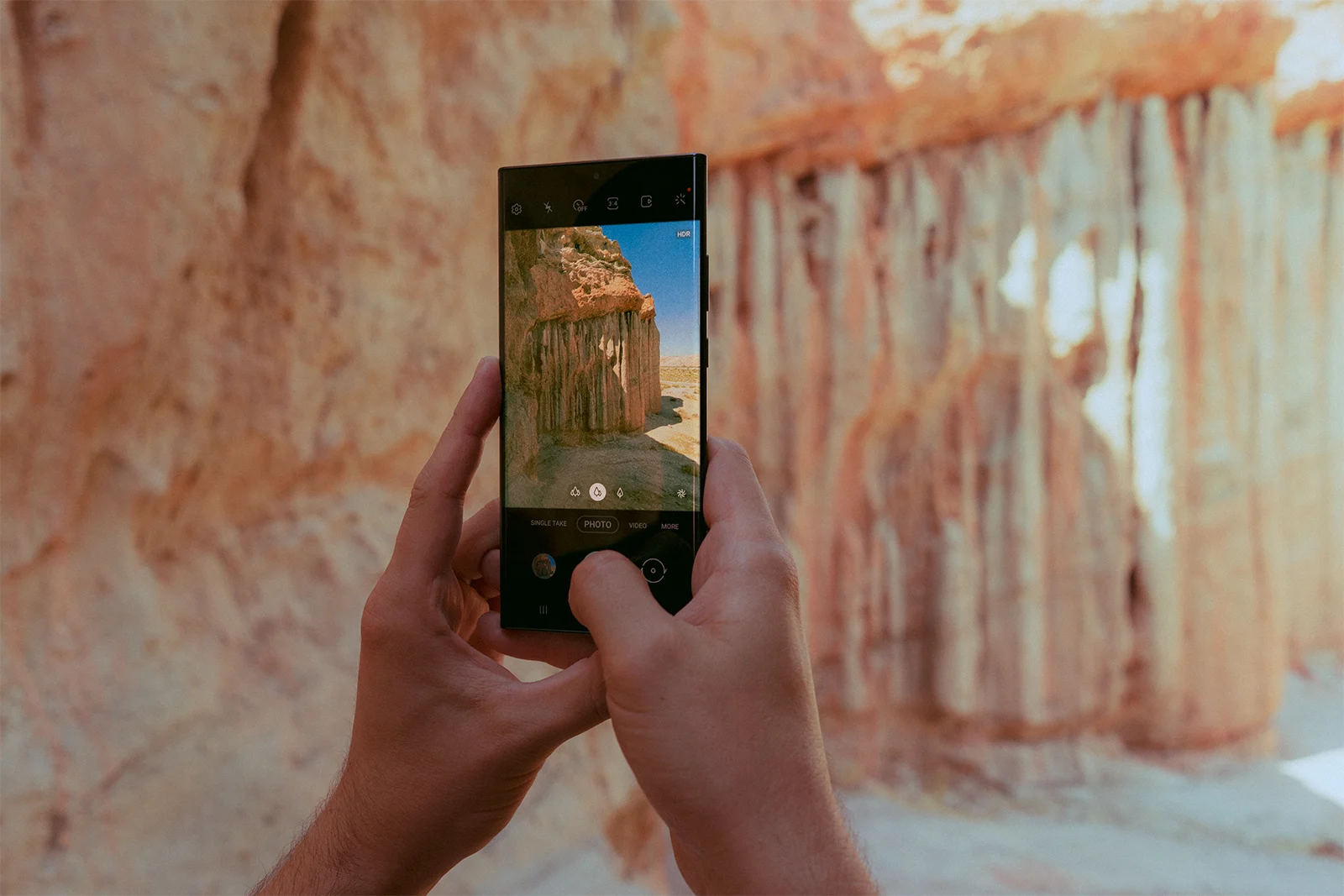

This is certainly the case for Neil’s latest series made in collaboration with WePresent and Samsung, which responds to the theme of “Reflection.” For the project—dreamily entitled Visitor—the photographer began as he always does: Not taking things too literally. “I wanted to try to make a series that tunes into my own sensibilities and tastes, and try to capture a sort of emotional memory,” he says from his home in L.A. “I've always tended to avoid the literal interpretation of something in any brief.”
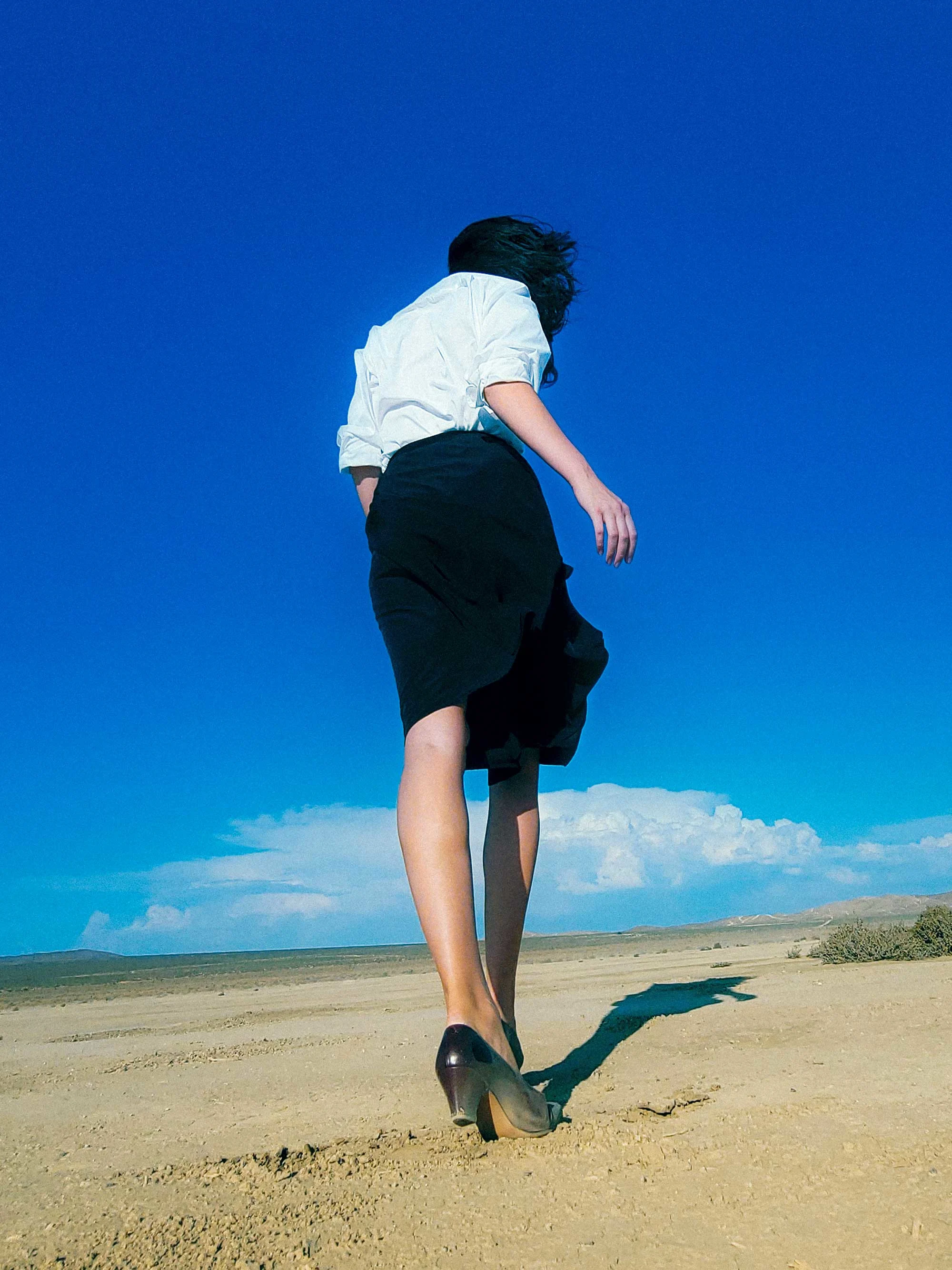


Neil set off for the rolling expanse of the Californian desert, a place he often used to frequent but hasn’t been this year. “It’s probably no secret that I've spent a lot of time out in these rugged, disastrous, savage landscapes,” says Neil. “The idea came to me quickly: I wanted to capture memory fragments of these places I used to explore and inhabit.” Given the restrictions of the COVID-19 pandemic, Neil has travelled less; for this series, he wanted to revisit the places that used to inspire his work and outlook.

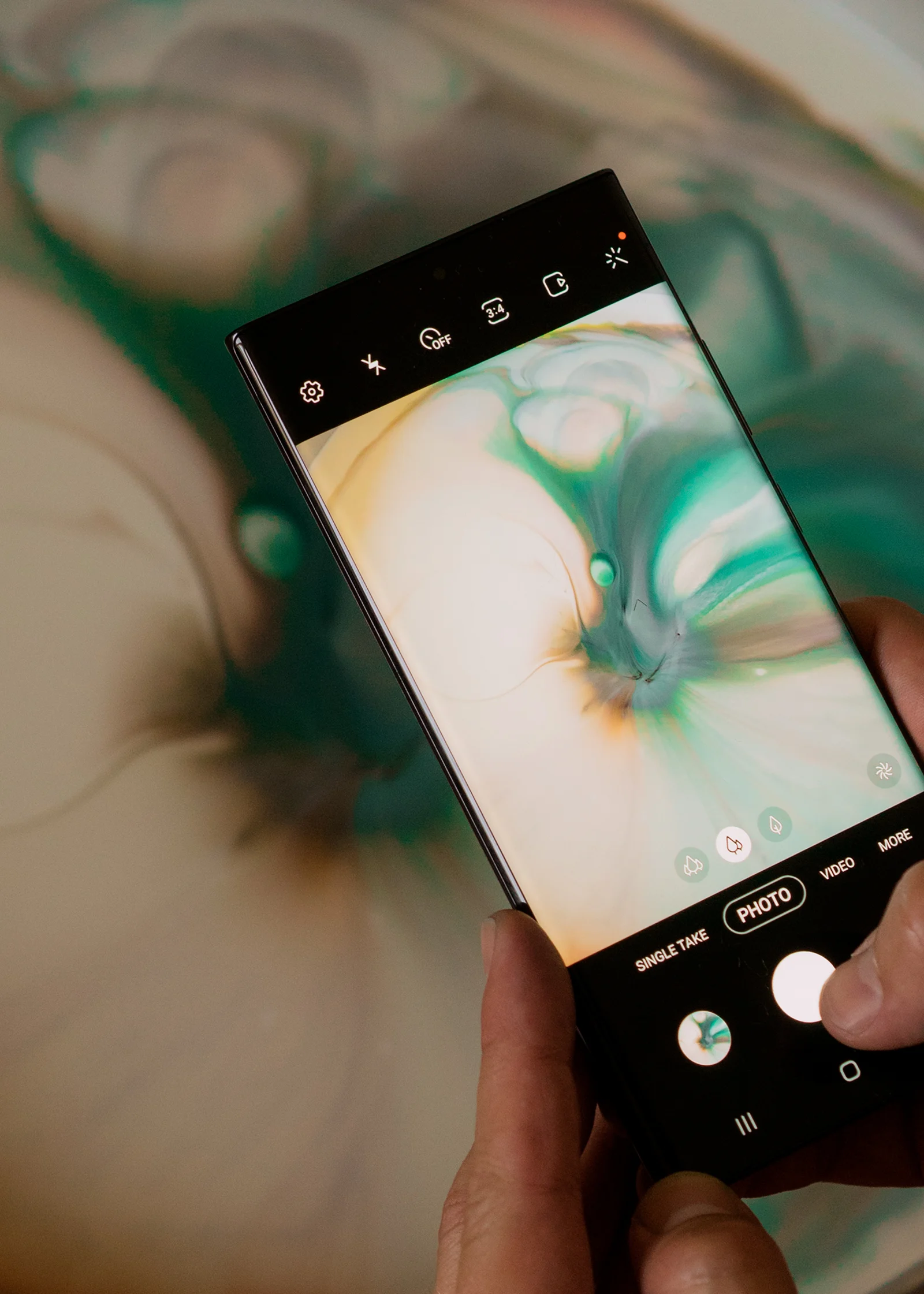

A model wearing a classically simple black skirt and white shirt — or in a vivid red dress for the series of night images — became one of Neil’s focuses for his desert shoot. It’s unclear who she is, or where she’s going; simple silhouettes flash throughout the image, like an unexpected, fleeting recollection. “I love the idea of seeing everything a little bit more stretched out, like it’s a bent reality,” says Neil. “The Samsung Galaxy Note20 Ultra 5G I was shooting with has a toggle that lets you do these Ultra wide images, which are almost panoramic, and which helped me achieve the sense of a lost memory I wanted to capture, as if these images are from a daydream.”

For Neil, using new tools greatly informs not only the sense of magic and wonder in his images, but also his own sense of wonder and inspiration as a maker. Getting to know a new device, and experimenting with its capacities, pushes him into considering new, unexplored possibilities. Once he’s familiar with something, he’s found himself repeating old, built-in processes that no longer excite him as an image maker. “The moment something new comes out, I always try to get my hands on it fairly quickly,” he says. “Using a new tool is like opening another door or window in your mind, because the moment you use something new, you find yourself doing something new. I definitely found myself doing that on this project: just throwing myself onto the ground and looking up with the Samsung Galaxy Note20 Ultra 5G to capture the model, because it’s less cumbersome than the big cameras I’m used to. You find yourself just bending and moving and accessing new ideas. The atmosphere changes.”
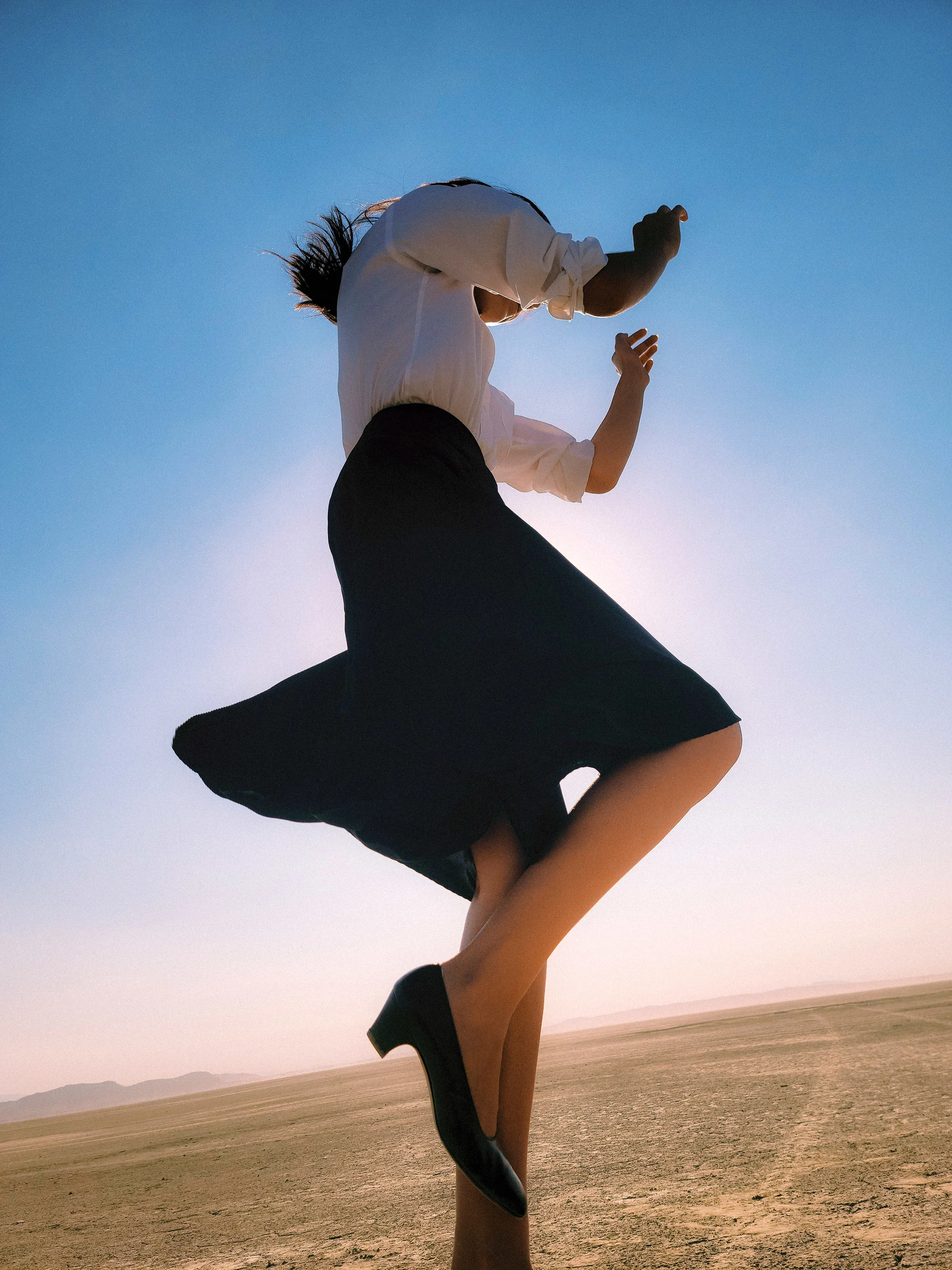
In homage to the landscapes so integral to his vision as a photographer, Neil also shot the rough textures of rock and canyon themselves to sit alongside the more poetic, free-flowing images of a model in motion. Together as a series, they flitter beside each other with the same fleetingness of thought, mimicking the process of the mind rolling from one memory to the next in quick succession. And as the mind doesn’t make connections in a linear manner, a third group of photographs of abstract, psychedelic swirls of color sit alongside the landscapes and portraits; these images draw from the tones of the desert canyons, and seem to represent the way memories fade away into pure mood. “Together, they almost show the way my brain hops around when I'm thinking about things,” says Neil. “It's either the inexplicable, or the complete direct, or the complete abstract.”

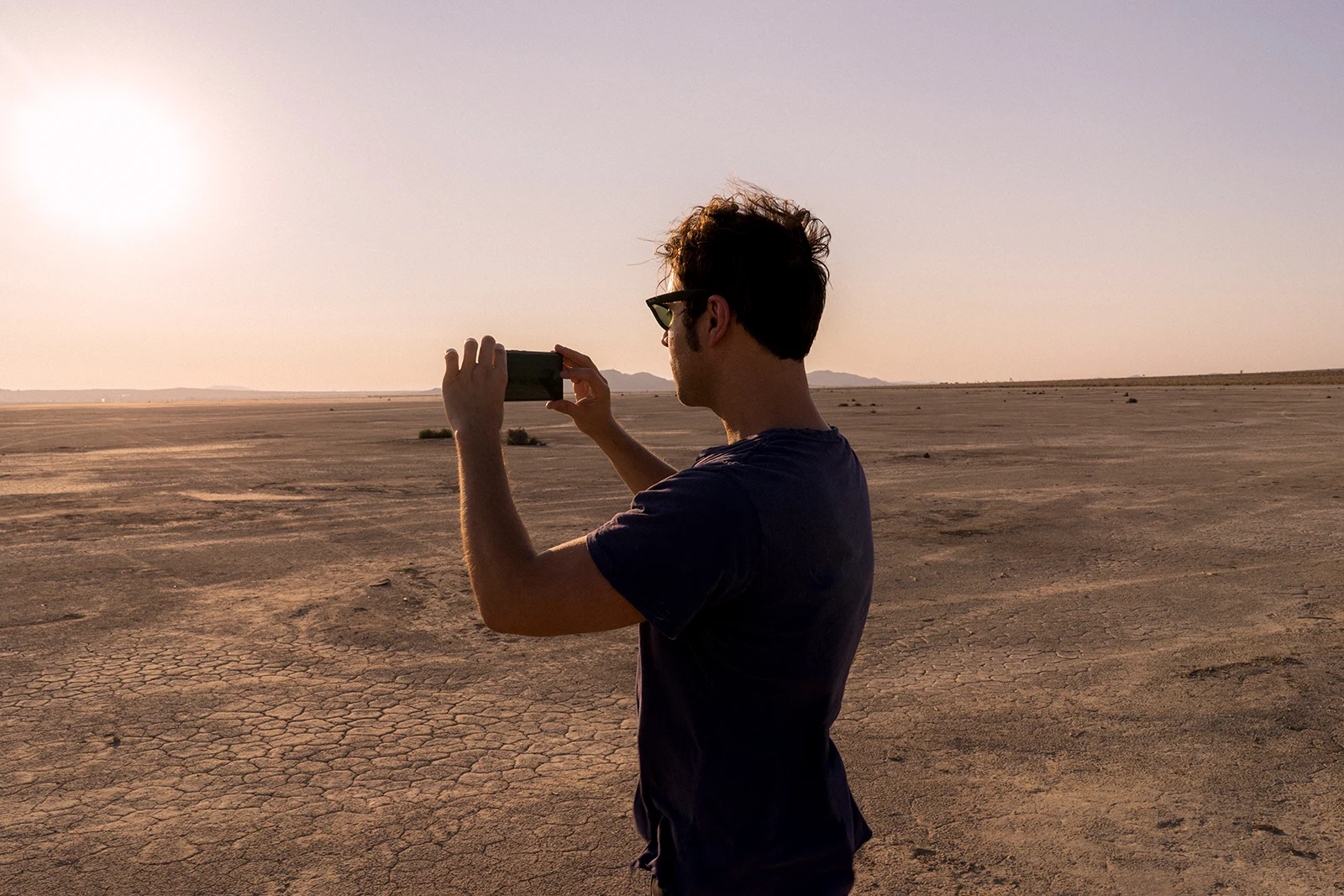

To create the psychedelic swirls themselves, Neil used a marbling technique. In mixing trays at home after road trips out into the desert, he combined natural dyes with soaps and creams to create snaking, textured forms. “It’s almost like color therapy,” he says. To capture these patterns up close, Neil used the Space Zoom functionality on the Samsung Galaxy Note20 Ultra 5G, which enables a user to “effortlessly explore” areas before finding the crop they most like. “When you’re using the trays and mixing all of the liquids, it's really easy for you to get yourself and the camera reflected in the composition when you’re bending over the tray,” he explains. “What I was able to do was place the device off to the side of the trays and use the zoom function to capture close-ups without the reflection.”
Despite divulging the details in conversation, Neil ultimately wants the viewers of his projects not to immediately understand how they were made. He wants them to feel mesmerised by the pure, strange impact of the visual—to suspend the sense of reality. “I’ve always tried to camouflage the technique or the device,” he says. “That’s also what I’ve intended with Visitor.”
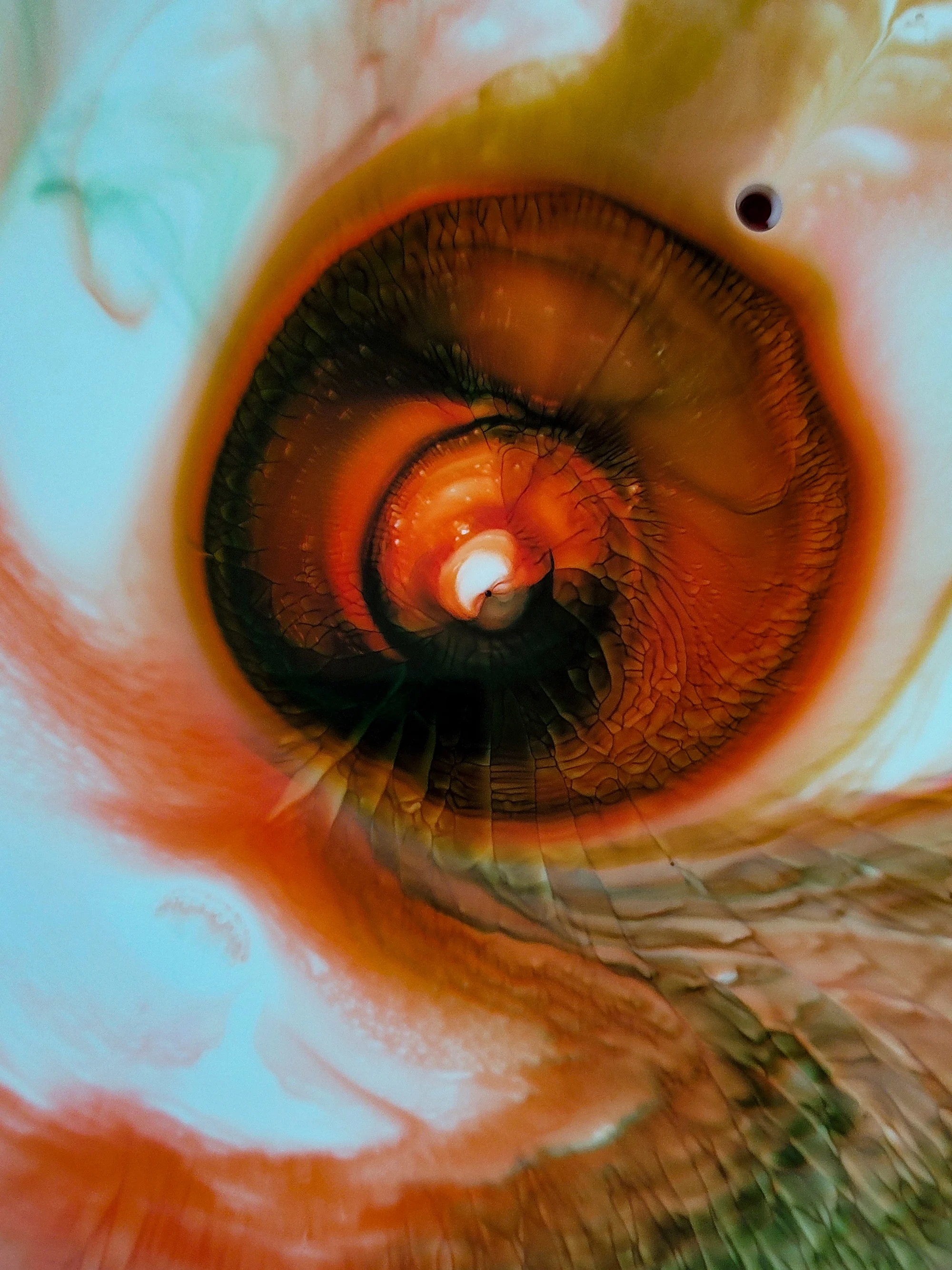
Using a new tool is like opening another door or window in your mind, because the moment you use something new, you find yourself doing something new.

While driving home from the desert, after revisiting such a personally meaningful setting, the name for the series, Visitor, struck Neil immediately. Like most things, he doesn’t overthink a title, but allows an idea to surface naturally, rising from his subconscious. “Not being in the desert for so long, it almost felt like I was a tourist. What felt so normal to me in the years past, felt like I was now a true visitor, returning to something that's very familiar to me,” he says. With a new tool in hand, visiting a place from his past became an opportunity to find new ways of looking at the familiar.

This year has thrown numerous challenges and working disruptions at creative freelancers, but Samsung and WePresent have partnered to prove that obstacles to the creative process can be overcome with new ways of thinking and the right tools. And Samsung's new addition to the Note series is the most advanced yet.
The Galaxy Note20 Ultra 5G brings PC power to your hand, enabling you to create wherever you are, powered with features including the signature S Pen, Samsung Notes, all-day intelligent battery life and pro quality 8K video capture. Because when things just work, you have more time for what matters most.


